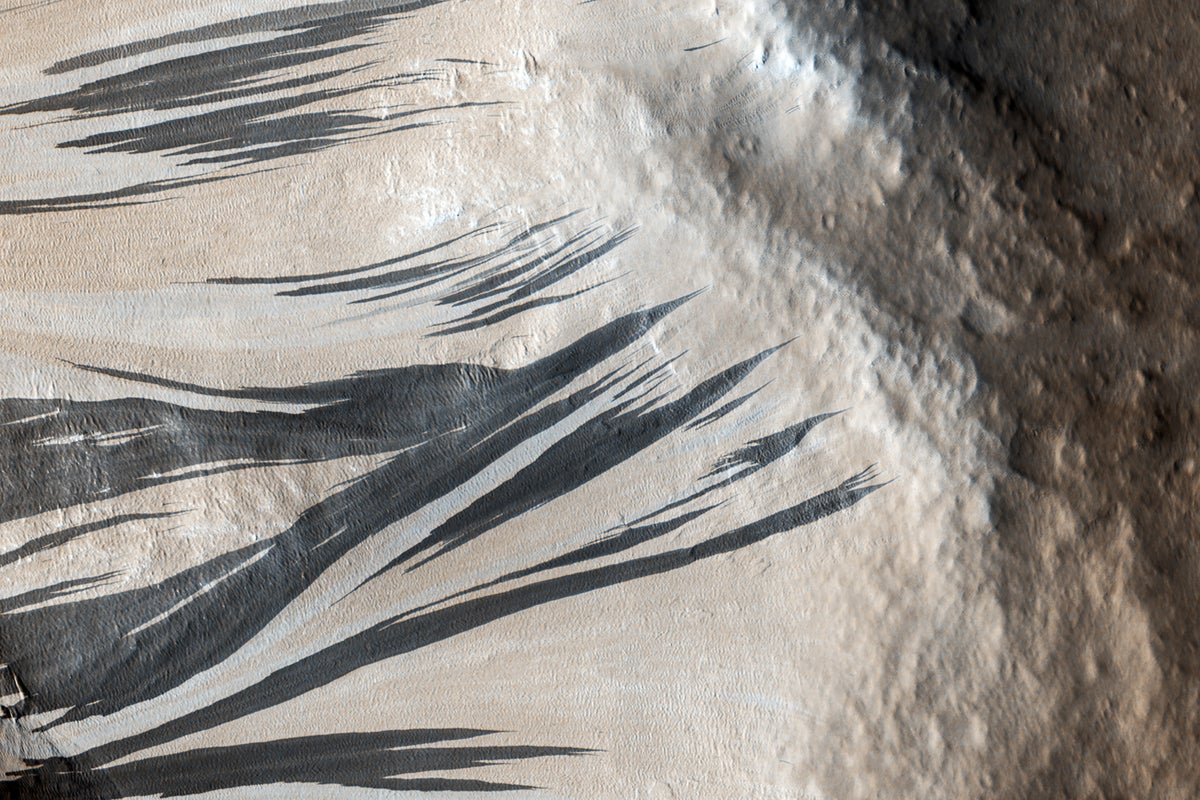
"Recent findings indicate that long streaks observed on Martian slope sides and crater walls are caused by disturbed dry dust, not liquid water seepage."
"Current conditions on Mars show a dry, frozen environment. Any existent water is frozen, primarily located at the poles, with no liquid water on the surface."
"Mars boasts signs of potential historical water with evidence of ancient rivers and lakes, yet all liquid water has evaporated or seeped underground."
"The potential for liquid water underground on Mars remains enigmatic, with streaks on slopes suggesting a hydrological history that may no longer exist."
Research published in Nature Communications suggests that long streaks found on the slopes and walls of Martian craters are caused by disturbed dry dust instead of liquid water seeping from beneath. Current observations reveal a largely desiccated environment on Mars, with no surface liquid water and frozen water located mainly at the poles. Evidence of past rivers and lakes indicates that Mars once had liquid water, but significant amounts have since evaporated or moved underground, creating an ongoing debate about the existence of liquid water today.
Read at www.scientificamerican.com
Unable to calculate read time
Collection
[
|
...
]